If your cat scratches and itching nonstop near its ear, they may have fleas. The reddish area appears around the ear. Sometimes, the patches of skin are also removed because of constant biting and scratching of fur. This is another symptom of fleas on the kitten’s face.
If you have seen fleas around you and feel red spots on your skin when you are with your cats, then I feel sad to tell you have fleas in your house. You must find the solution because sometimes flea biting may cause an allergic reaction. But don’t panic if you are facing this type of problem. Follow our expert guide to get rid of fleas.
- What do fleas look like?
- Fleas Life Cycle:
- Facts About Fleas:
- How do fleas attach to your pet?
- How to tell if your cat has fleas?
- Some Common flea diseases:
- How to get rid of fleas on kittens face?
- Method 1: (Use Frontline Spray)
- Method 2: (Use Comb)
- Method 3: (Flea Powder)
- Method 4: (Clean your pet’s bedding)
- Method 5: (Bath using flea shampoo)
- Method 6: (Regular Grooming)
- Method 7: (Natural Remedies)
- Flea vs Tick – what’s the difference?
- How to get rid of fleas in the house fast?
- Hire a steam cleaner:
- Use of powerful vacuum:
- Reduce visits:
- Can fleas cause eye problems in cats?
- Fleas medicine for kittens
- Final Thoughts:
Key Takeaways of Fleas on Kittens Face
- Fleas are little, parasitic insects that search for a host creature, like a kitten, and can result in severe discomfort, itching, and even anemia.
- Fleas are of darker color. They are generally black or reddish-brown.
- Fleas have powerful back legs, which they use to jump onto kittens as they walk by.
- Fleas cause irritation and itchiness in kittens, so scratching is the most common way to identify a kitten with fleas.
- Fleas are wingless, tiny bugs that reside on animals and suck their blood. While ticks are pretty big as compared to fleas.
- Yes, undoubtedly, fleas can cause severe problems in a feline’s eyes, like infections, if they get around her eyes.
- The most helpful way to protect kittens against fleas is by using frontline sprays. You can use it on felines and kittens from two days of age.
What do fleas look like?
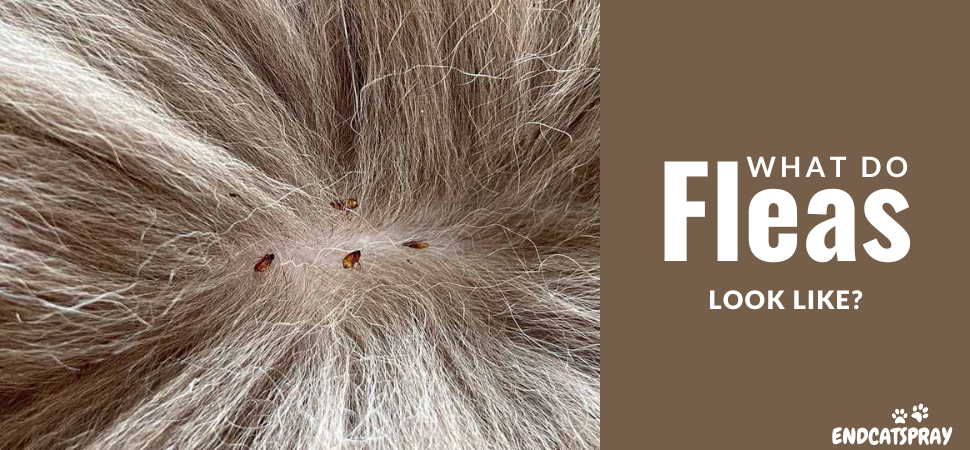
Fleas are of darker colour. They are generally black and reddish-brown. They are minor, wingless, itty-bitty bugs almost 1-2mm long. Fleas love to jump; they cannot fly because they lack wings but can jump up to 13 inches on a flat surface. These bugs are oval, just like ticks. (But ticks are more prominent.) Fleas have piercing mouths for sucking the blood of their host. Their body type allows them to move easily. They have flexible spines, which they use to lock themselves on cats’ fur, and that’s why it’s very difficult to remove them.
Fleas Life Cycle:
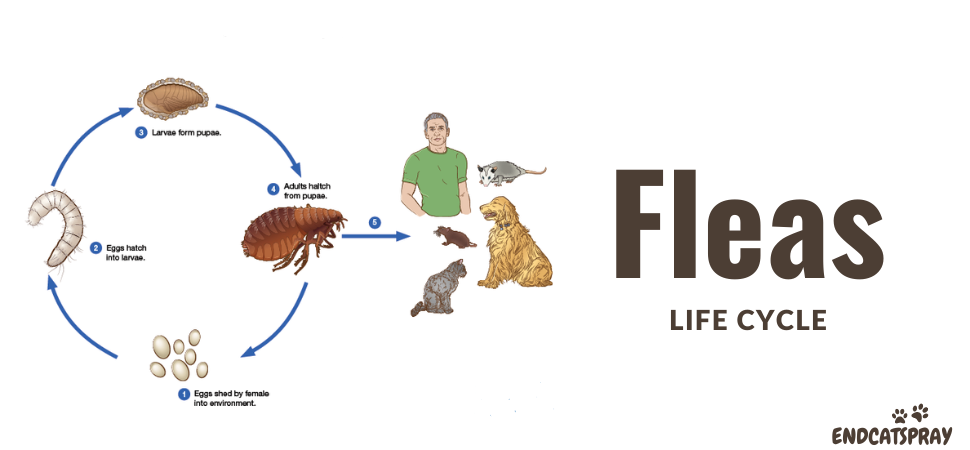
As mentioned above, fleas live on cats’ fur and lay their eggs on cats’ fur. The average life cycle of the fleas is around 100 days, but they can live up to a year indoors. The flea life cycle can be extremely fast or last several months to even years based on the environmental situations throughout their life stages. You may see numerous fleas during the summer season. They desire 21 degrees and above temperatures.
Almost all fleas have four life stages, including (1) egg, (2) larva, (3) pupa (in a cocoon), and (4) adult.
Facts About Fleas:
There are almost 2,500 flea species in the entire universe. Fleas are primarily active in familiar places, rooms where cats sleep, and if there is excessive activity. You might find fleas hopping on the furniture and carpet. Flea eggs can survive up-to 18 months.
How do fleas attach to your pet?
Fleas have powerful back legs, which they use to jump onto kittens as they walk by. As soon as they get attached to your pet, they multiply quickly. While feeding on the pet, one flea can lay more than fifty eggs every day.
Animals can pick up fleas anywhere. Fleas and ticks prefer animals due to their fur. Pets have preferred places to sleep and rest. These places are hot places for flea infestations. As we mentioned earlier, they can multiply very quickly. If one of your cats gets the fleas, then you must start treatment of all your cats to get a fleas-free home.
Some people think that fleas only attach to outdoor pets. But this is not the case. Fleas can attach to indoor pets as well. Moreover, Cats can likewise get fleas from local wildlife and fellow pets, like rabbits, guinea pigs, birds, raccoons, squirrels, possums, and skunks.
If your pet is on proper flea prevention, few don’t resist fleas, which means the fleas can still get attached to them. Remember that flea preventives require some time before they begin to kill different parasites so that they can enter, get inside the home, hop off the pet, and jump onto your feline before the impact of the flea medicine.
How to tell if your cat has fleas?
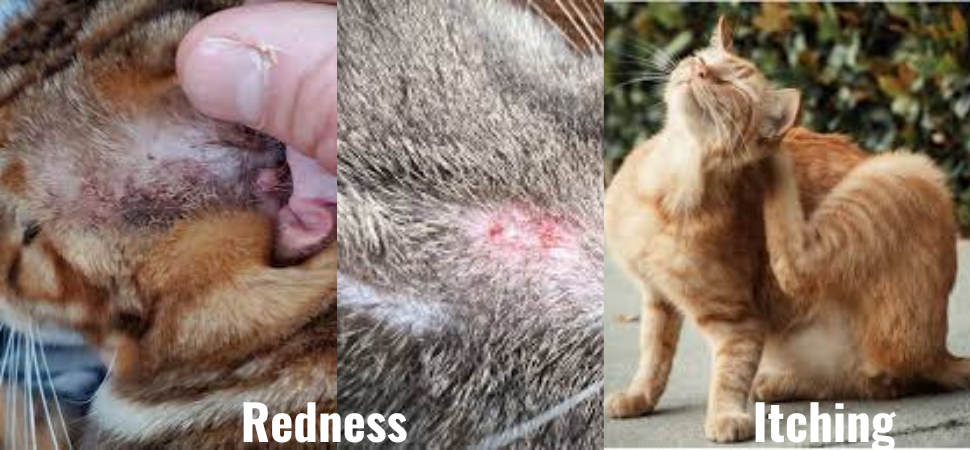
These are the most common symptoms that can show your cat has fleas.
- Scratching and itching
- Hair loss or sore patches
- Dark Specks in their skin
- Thickened skin area
- Redness
- Little spots on your lap when you are near to your cats
- Cats feel discomfort
- Pale Gums
Some Common flea diseases:
Fleas can cause serious health issues in cats. When they bite, they suck blood and inject saliva into the bloodstream. It is the cause of the most common symptom called itchy skin.
It can be a serious issue in some cats who end up with skin infections due to constant scratching or transmit tapeworms, hair loss and scabs; even in some cases, kittens can die due to anaemia, or you can say excessive blood loss due to fleas bites. They can transfer worm eggs to cats, resulting in upset tummies and weight loss.
How to get rid of fleas on kittens face?
If you find fleas in your single cat, you treat all the cats in your house. Otherwise, the treatment will not be as successful as you want. Let’s discuss the multiple methods you follow to get rid of fleas.
Method 1: (Use Frontline Spray)
As per my experience, I suggest you use a frontline spray to protect your cats from fleas or ticks, including paralysis ticks. You can use it even on your two days kitten. This is also known as a treat for fleas.
To protect your cats against paralysis, apply it every three weeks. Speak to your vet before using a frontline spray on the safer side.
Method 2: (Use Comb)
Fleas are fast and little insects; using a comb can remove fleas from a kitten’s body. Dip your comb in hot water, and you can add dishwashing soap to help you catch these tinny insects. The comb will also help to remove eggs in your cat’s fur. You need to use a comb very gently around the neck area.
Method 3: (Flea Powder)
Flea powder is a short-term solution, but you can use it to achieve instant results. Once your cat shakes their body, the powder will no longer be active.
Method 4: (Clean your pet’s bedding)
First, you need to use a vacuum on the cat’s bedsheets, blankets or any other things on the bedding area to remove hair and other things. After the deep cleaning, wash these things and put them at the highest temperature (sunshine), which helps to remove fleas.
Method 5: (Bath using flea shampoo)
Many shampoos are available in the market, but the best way is to ask your vet which shampoo is more effective for fleas. Shampoo may kill the fleas directly on your pet’s body but not on the other places of the house.
Method 6: (Regular Grooming)
Groom your pet regularly, especially those breeds with long hair compared to short ones. If you don’t wash them off and their hair gets sticky, there is a higher chance they will have fleas.
Method 7: (Natural Remedies)
You need two cups of rosemary leaves in hot water if you prefer natural remedies. After the mixture reaches normal temperature, spray it on your cat’s body.
Flea vs Tick – what’s the difference?
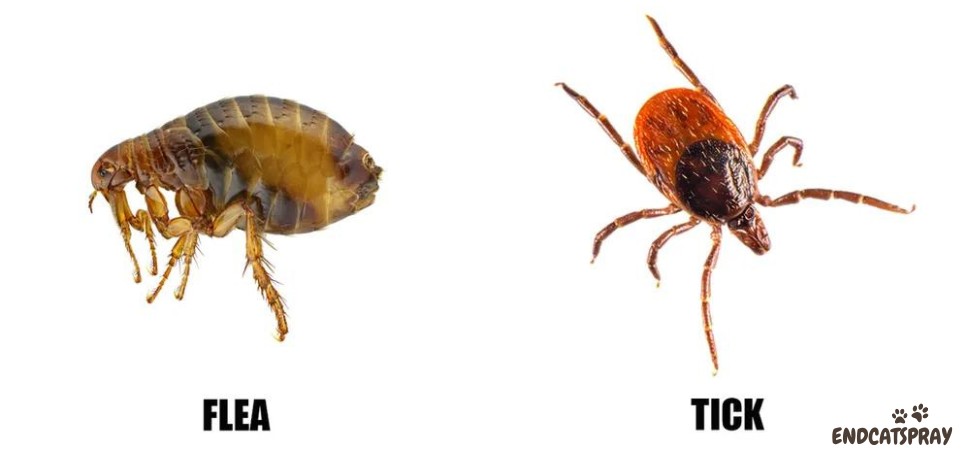
| Fleas | Ticks |
|---|---|
| Fleas are small. | Ticks are much larger than fleas. |
| Fleas are wingless, tiny bugs, and that can jump high to reside on animals. | Ticks are more considerable than fleas. They can’t jump; they used to crawl to find their host. |
| Fleas have six legs. | Ticks have eight legs. |
| Fleas prefer to seek an appropriate host and spend the rest of their lives sleeping, eating, and reproducing while living in a cat’s fur. | Ticks mostly search for multiple hosts and keep moving from one cat to another in different stages. They can live up to three years in various environments. |
| Fleas prefer to live in a hot environment. | Ticks also live in hot environments but survive better in cold weather, even when they hide under snow. |
| Fleas live in the entire house, in your clothes, furniture or anywhere. | Ticks typically wait for the appropriate host; when they walk nearby, they get attached. |
| Fleas can cause skin issues, allergies and tapeworms. | Ticks can transfer illnesses like Rocky Mountain spotted fever, Lyme disease, and tularemia. |
How to get rid of fleas in the house fast?
There are few ways I would suggest to clean your house.
Hire a steam cleaner:
It is best to steam clean your carpets, furniture and cat’s bed if you find fleas in your house. Use of high heat and soap fleas will gone.
Use of powerful vacuum:
Though steam cleaning is generally considered a very effective way to clean your house, you can use a powerful vacuum to clean your house. Clean the floors, mattresses, and every corner of the house with a vacuum; after finishing the vacuum, clean the vacuum bag immediately.
Reduce visits:
When you find your cat has fleas, first, you need to reduce the visits of infected cats in the house. Keeping her out of the house is a safe way to prevent fleas from entering your house.
To prevent flea infestation, you must treat your cats regularly at home. You can use flea spray, natural remedies, and regular bathing and grooming comb to prevent fleas on kittens.
Can fleas cause eye problems in cats?
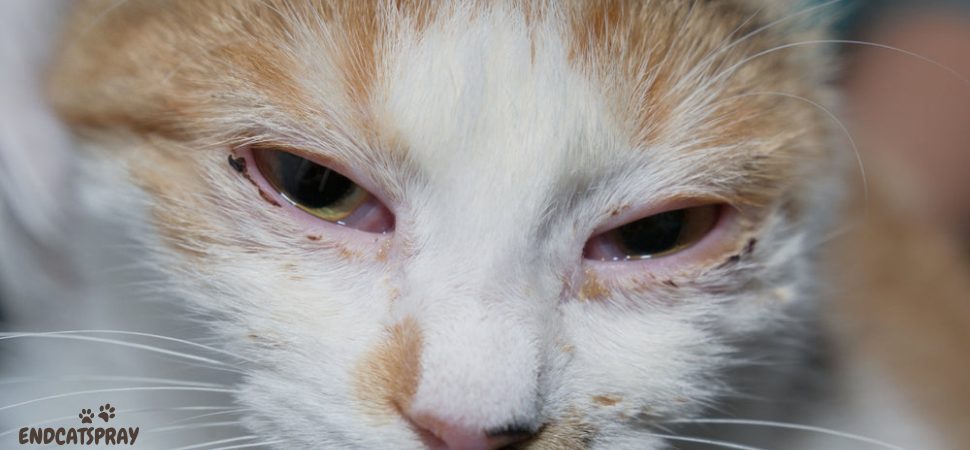
Yes, fleas can cause problems in cats’ eyes, but it depends on how powerful the attack is. If they lay eggs around or in the eyes of a cat, this may be an alarming situation. As a cat owner, if you have seen fleas on your pets and are worried about their eyes, you must call for your vet’s help quickly.
When removing fleas from your feline, do not spray flea medication too near her eyes, as it can lead to further harm. As an alternative, a flea comb is a very effective removal tool.
Fleas medicine for kittens
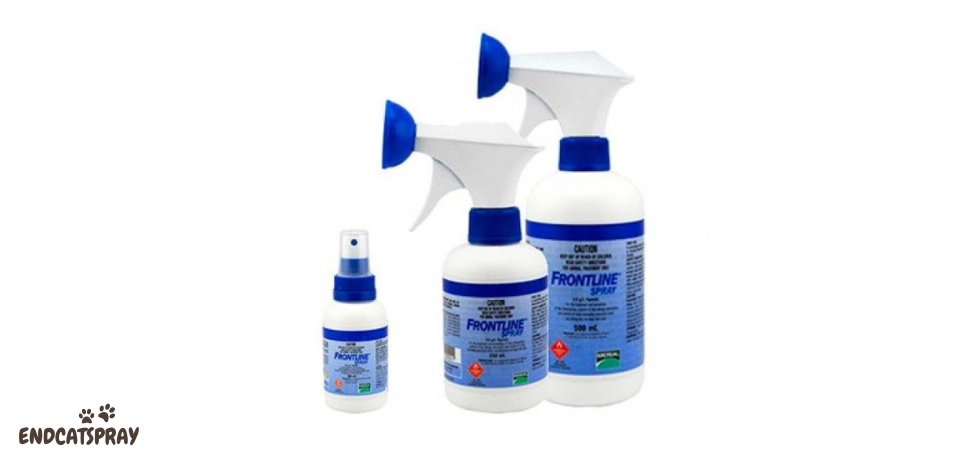
Frontline Spray is the best flea medicine for your cats and kittens, which I highly recommend. You can use the frontline spray for even a two-days kitten. It provides actual, long-lasting control of fleas on the kittens and kills almost 100% of present fleas within 24 hours.
In addition, the Frontline Spray keeps killing fleas for a month or even longer. This Spray’s main ingredient is fipronil, a broad-spectrum pesticide that disturbs the central nervous system of insects.
Final Thoughts:
Fleas should be addressed if you have cats and kittens. Not just outdoor but indoor cats also get these fleas. You can check for fleas if a cat is biting on its skin, scratching, or acting agitated. Fleas on a kitten’s face or any other part of the body can suck the blood of their host, resulting in anaemia and other diseases. Even though you can groom the feline to eliminate fleas, most vets do not suggest it.
The best way to remove fleas from their bodies is to treat them with effective flea treatments such as frontline spray and give them a regular bath. Knowing how to detect and kill fleas from the cats and in your house will decrease their scratching and protect them.
Reference Links:
- https://www.kittenlady.org/fleas
- https://be.chewy.com/what-do-fleas-look-like/
- https://www.cdc.gov/fleas/
- https://www.petmd.com/cat/what-do-fleas-look-cats
- https://yourpetandyou.elanco.com/us/parasites/fleas/common-flea-diseases-in-cats
- https://www.beaphar.co.uk/blog/fleas/how-to-tell-if-your-cat-has-fleas/
- https://www.adamspetcare.com/expert-care-tips/pest-treatment-and-prevention/how-to-get-rid-of-fleas-on-kittens
- https://www.moxieservices.com/blog/tiny-invaders-telling-the-difference-between-fleas-and-ticks/
- https://www.countryliving.com/uk/homes-interiors/interiors/a33630251/how-get-rid-fleas/










